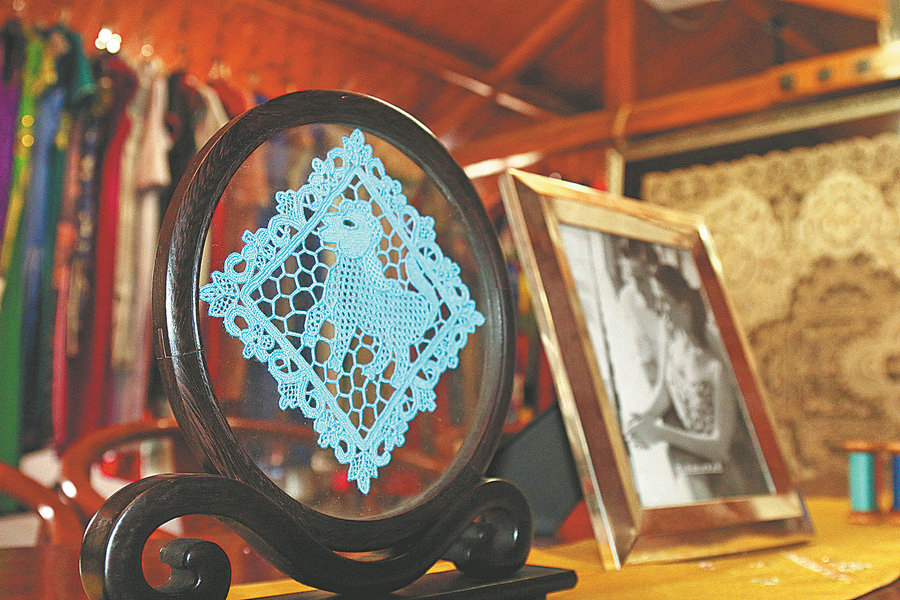

Explaining why she has devoted herself to lace work, Wang says: "I recall when I was very young helping my parents thread needles. So I was heavily influenced by what I saw and heard. I then learned calligraphy, Chinese painting and Hangzhou embroidery. That was all when I was a child, and it's helped me to innovate and pass on our intangible cultural heritage."
In the early years more than 200,000 women in Xiaoshan were highly skilled in working with Xiaoshan lace; today only a few people continue to learn the skills, but as an inheritor of the craft Wang is intent on seeing that it never dies.
She and her team have visited many old Xiaoshan lace artists to learn their skills and record their techniques, leaving valuable information about Xiaoshan lace, and have also created a lot of artwork that integrates traditional Chinese embroidery skills into Xiaoshan lace.
The Xiaoshan research institute is also an intangible cultural heritage experience site, and it is open to the public free of charge.
"It's for those who are interested in the lace-making technique,"Wang says. "In addition many special events are held every year for both children and adults, and these attract about 30,000 people a year, especially during Chinese festivals such as Qixi Festival, or Chinese Valentine's Day, and Dragon Boat Festival."
Fang Xiaoying and Zhang Xiang contributed to this story.